Best Time To Go Live on Facebook in 2023
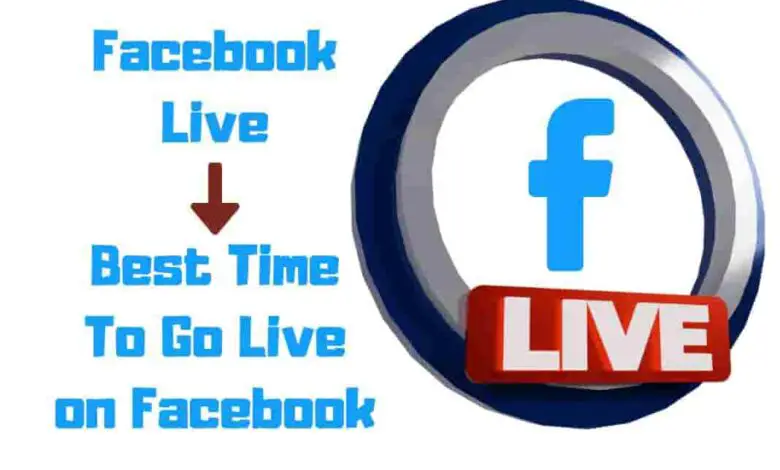
Are you looking to maximize engagement and reach a wider audience through Facebook Live? Understanding the best time to go live on Facebook can make all the difference in your success. This blog post will guide the advantages of going live, discuss factors influencing optimal streaming times, and reveal strategies for identifying your ideal broadcasting schedule. So grab a seat, and let’s walk into the world of Facebook Recording – unlocking its full potential awaits!
The Best Times To Go Live On Facebook: Perfect Timing
If you want maximum engagement on your Facebook Live broadcasts, consider live streaming on weekdays from 9 a.m. to 3 p.m., Tuesdays and Thursdays in the early afternoon, weekends during mid-morning or mid-afternoon, holidays, and special events – find out more about the best times to go live by reading further.
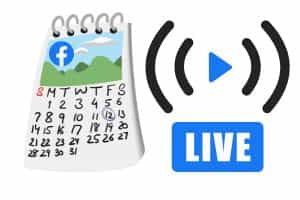
Weekdays From 9 A.m. To 3 PM
Going live on Facebook from 9 a.m. to 3 p.m. on weekdays is considered the best time for maximum engagement with your viewers. This period covers most people’s lunch breaks and provides an excellent opportunity to showcase your content during that downtime.
It’s also an excellent time window for brands targeting specific industries where work schedules may be more flexible, such as tech or entertainment.
According to Sprout Social, Tuesday and Thursday afternoons between 1 p.m. and 3 p.m. are the peak hours for engagement on Facebook Live broadcasts while sticking to business hours.
Making these days ideal for live streaming events – like product launches, Q&As, or interviews- providing optimum reach for your supporters at the correct time when they need a midday break while keeping them engaged throughout their working day!
Remember: it’s crucial not just to go live but to interact with your audience in real-time – this fosters trust and adds authenticity to your brand during higher viewing periods, giving you invaluable feedback directly!
Tuesdays And Thursdays In The Early Afternoon
If you want the most engagement and reach for your Facebook Live broadcasts, consider going live on Tuesdays and Thursdays in the early afternoon. These are optimal days and the best times to capture the attention of your target audience. Here are some key reasons why:
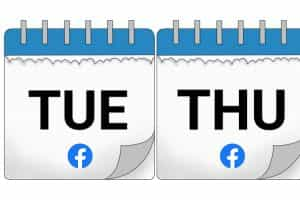
- People often take breaks or look for distractions during the early afternoon hours of 1 p.m. to 3 p.m.
- Late mornings and early afternoons are more productive times at work, so viewers may be more likely to take a break and check their social media accounts.
- Going live these days also helps you stand out from the crowd, as fewer channels may be actively compared to other times.
- Additionally, scheduling your telecast beforehand can help build anticipation from your supporters, who will know when they can tune in and interact with you during your stream.
Remember, it’s essential to consider your viewer’s demographics and previous engagement patterns before deciding when to go live on Facebook. Use insights and analytics to refine your strategy over time, but starting with Tuesdays and Thursdays in the early afternoon is a great place to begin.
Weekends During Mid-morning Or Mid-afternoon
If you plan to go live on Facebook during weekends, the best time is mid-morning or mid-afternoon. This is when people are more likely to have free time and be active on social media. Posting times can increase your chances of reaching a broader gathering and boosting engagement.
According to studies, Saturdays and Sundays are the most popular days for Facebook Live broadcasts. Going live during weekends lets you connect with your viewers in a casual, relaxed atmosphere.
You could promote weekend deals or special offers during your telecast to gain more attention from potential customers.
Remember to track your analytics and insights while testing different weekend broadcasting times is essential. By analyzing factors like reach, engagement rates, and user behavior patterns over several weeks, you can refine your strategy further and ensure that you’re getting optimal results from going live on Facebook during weekend hours.
Holidays And Special Events: Right time to go live
Holidays and special events are great opportunities to go live on Facebook and engage with your viewers. Here are some tips for timing your broadcasts around these occasions:
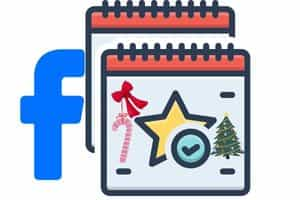
Consider the Holiday or Event:
Different holidays and events will have different schedules, so it’s essential to consider what works best for each. For example, a Christmas Day telecast may be better in the morning when families are opening presents. In contrast, a Fourth of July telecast may work well in the evening when people gather for fireworks.
Plan Perfect:
Like any other telecast, planning for holiday and event broadcasts is essential. Promote them in advance so your followers know when to tune in.
Be Festive:
Holidays and special events can bring extra excitement and fun into your telecast. Try adding some themed decorations or wearing something positive to get viewers engaged.
Collaborate with Others:
Partnering with other creators or brands can be a great way to reach more people during holidays and events. Look for opportunities to collaborate on broadcasts that align with the occasion’s theme.
Be Sensitive:
Remember that not everyone celebrates every holiday or event, so you must be liable in your messaging and content during these times.
By keeping these tips in mind, you can create engaging Facebook Live broadcasts that take advantage of the excitement surrounding holidays and special events throughout the year!
Considering Global Time Zones For International Audiences
Suppose your target spectators are spread across multiple time zones. In that case, it’s crucial to consider the best time to go live that works for everyone.

For example, if you’re based in New York and want to reach viewers in London, going live at 9 a.m. Eastern Standard Time would be too late for them.
In this case, you should schedule your show earlier or consider doing a pre-recorded video that can be viewed anytime. Analyzing your best Facebook Insights data is one way to determine the optimal time for international viewers.
This information will show you where your supporters are and what free time they are most active on social media. You can also use tools and software like Hootsuite, which provides global publishing schedules for different regions.
Remember, while it’s essential to factor in international audiences when deciding the best time to go live, remember your local viewers. Keep conversations open with all viewers during broadcasts – ask them where they’re tuning in from and adjust accordingly for future streams!
Advantages Of Live Broadcast On Facebook
Going live on Facebook has numerous advantages, including increased engagement and reach, real-time interaction with your audience, and building trust and authenticity with your admirers.
Increased Engagement And Reach on Facebook
One of the significant benefits of utilizing Facebook is the increased engagement and reach it can offer for your content. This powerful feature lets you telecast real-time video directly to your admirers, capturing their attention more effectively than static Facebook posts or pre-recorded videos.
Facebook has reported that live media receives six times more interaction than regular video content. As a result, going live on the platform can significantly amplify your brand’s visibility among users.
Moreover, by providing unique and authentic experiences through interactive live streams, you gain an opportunity to foster stronger connections with your audience.
For instance, using Facebook sessions for question-and-answer segments or product demonstrations encourages viewers’ comments and reactions. It allows them to share these moments with their networks, further expanding your reach.
Additionally, consider sharing exciting milestones or behind-the-scenes looks at company events; this exclusive content can make viewers feel part of something special while increasing overall engagement levels across your social media presence.
Real-time Interaction With Audiences on Facebook
Real-time interaction with your audience is one of the significant advantages of using Facebook for broadcasting. This feature allows viewers to comment, react, and ask questions during the stream, fostering a more intimate and engaging experience than traditional content formats such as pre-recorded videos or blog posts.
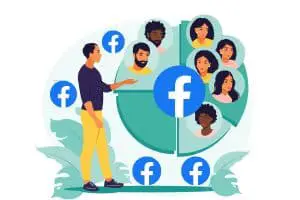
For instance, when discussing tips for finding the time to go live on Facebook, an SEO expert might share their insights while also asking viewers about their preferred hours so that they can offer tailored advice.
Interacting with your audience in real time helps build rapport and provides valuable feedback and insights into what resonates well with them.
Additionally, it enables you to address any concerns or misconceptions immediately, ensuring a better overall understanding of your message.
Let’s say you’re going live at 1 pm on Tuesday – considered one of the best hours according to experts – and start sharing some details about optimizing algorithms for greater reach; if someone comments saying they don’t understand a particular concept thoroughly, you can immediately clarify it within the same telecast without having to wait for additional comments or emails.
By embracing this interactive nature of live Facebook broadcasts and actively involving your audience in conversations during these sessions, you create an environment that encourages them to return for future streams.
Furthermore, real-time engagement has been shown to increase organic reach as it contributes positively towards Facebook’s algorithm favoring high-engagement content – so make sure you seize every opportunity available when searching for that exact time slot!
Building Trust And Authenticity
One of the most significant advantages of going live on Facebook is building trust and authenticity with your audience. Live streaming lets you connect personally with admirers, showcasing your genuine personality, knowledge, and values. This humanizes your brand and helps create a stronger bond with viewers who appreciate transparency.
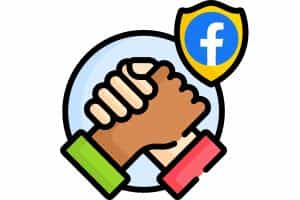
For example, you own a small bakery and want to promote your business on social platforms. By hosting Live sessions where you demonstrate baking techniques or share behind-the-scenes footage of daily operations, you make viewers feel more connected to your brand and showcase the standard of ingredients you use and the care put into crafting each product.
Interacting with viewers in real-time by answering questions, responding to comments, or addressing concerns during live broadcast further demonstrates that you value their opinions and are dedicated to providing exceptional services.
To maximize the benefits of telecasting on Facebook, choose strategic hours when your target audience is most active online – such as Tuesdays or Thursdays in the early afternoon – ensuring optimal engagement rates while strengthening credibility through authentic content-sharing experiences.
Factors To Consider: Best Time To Go Live On Facebook
When deciding to go live on Facebook, it is essential to consider viewers’ demographics, industry and topic relevance, previous involvement patterns, and social media activity patterns.
Audience Demographics And Time Zones
Consider your viewer’s demographics to determine when to go live on Facebook. Knowing your target viewers, where they live, and their typical schedules can help you decide when to broadcast.

For example, suppose most of your admirers are in Asia or Europe. In that case, you should adjust your schedule so they can tune in without staying late at night.
It would be best if you also considered the age range of your viewers because different age groups have varying daily routines, which might affect the optimal timing for a stream.
If your supporters consist primarily of students or working people with 9-5 jobs, broadcasting during evenings or weekends should be preferable since these times don’t conflict with their school or work schedules.
Keeping track of this data can give you insights into what month, days, and hours will garner higher engagement rates from potential viewers.
It’s essential that selecting an appropriate timing is critical for maximizing viewer interactions. Any disconnect between that watching could lead them to miss out on conversations within comments sections, which would minimize impact and influence reach further down the line.
Industry And Topic Relevance
It’s important to consider the industry and topic you’ll discuss when deciding the time to go live on Facebook. For example, a beauty blogger may find that evenings or weekends work better for their viewers.
At the same time, a Facebook business consultant may have more success with midday broadcasts during the week. It’s also important to factor in any seasonality or events related to your industry that could affect engagement levels.
For instance, a company selling holiday decorations might want to plan its telecast for early November when people enter the Christmas spirit. Likewise, you plan on discussing current events or breaking news topics. In that case, checking whether any conflicting events or significant occurrences simultaneously could distract from your stream is crucial.
When choosing your timing strategy, you can ensure maximum engagement and reach among your target viewers on FB Live by considering these factors.
Previous Engagement Patterns on Facebook
Before deciding to go live on Facebook, looking at your previous engagement patterns is crucial. Analyzing your past telecast can give you insights into when your viewers are most active and engaged.
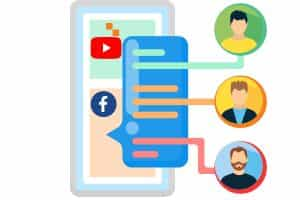
Look at data such as viewership, comments, likes, and shares to determine which broadcasts generated the most interaction.
Additionally, consider what type of content you were posting during those hours. Were you sharing news updates or hosting interviews? Did you ask questions or encourage feedback from your viewers?
Understanding what drove engagement in the past can help inform your future broadcasting strategy.
Analyzing previous engagement patterns can be valuable in determining the optimal time to go live on Facebook. By understanding when your viewers is most likely to tune in and engage with your content, you can maximize the effectiveness of each telecast.
Social Media Marketing Patterns
Understanding social media marketing activity patterns is crucial when deciding when to go live on Facebook. It’s essential to consider when your target audience is most active on social media platforms, as it can significantly impact engagement and reach.
For instance, if you’re targeting a younger demographic, scheduling broadcasts in the evenings or late at night when they have more free time may be more effective.
Another factor to consider when analyzing social media activity patterns is platform-specific trends. Certain days of the week are typically more prevalent for specific types of content than others.
For example, Wednesday is known for its viral memes and videos on TikTok. At the same time, Thursdays are popular for Throwback Thursday posts on Instagram. By staying up-to-date with these trends, you can create broadcasts that appeal to your target audience and increase engagement.
Understanding social media activity patterns can help you find the optimal time to telecast live on Facebook based on your target audience’s behavior online. By considering which days and times people tend to be most active on various platforms, you can maximize your chances of reaching a larger viewers with your live streams.
How To Find optimal time to go live On Facebook
To determine your optimal time to go live on Facebook, analyze your audience insights, conduct test broadcasts at different times, and use insights to refine your strategy. Read on for more tips on maximizing engagement during Facebook Live broadcasts.
Analyze Your Audience Insights
To find the optimal time to go live on Facebook, it’s crucial to analyze your audience insights. This means studying critical data, such as when your followers are most active online and where they reside.

Insights can also reveal your audience’s behavior patterns, interests, and demographics. You can use this information to determine the best days and times for going live on Facebook.
For instance, if you notice that most of your followers are in Europe or Asia, you can schedule live streaming sessions during their prime time hours instead of catering solely to US-based viewers.
Additionally, analyzing past engagement rates can help you identify trends and popular topics that could increase interest in future broadcasts.
By using these insights correctly, you’ll be able to craft a targeted strategy that resonates with your unique audience preferences and maximizes active involvement.
Conduct Test Broadcasts At Different Times
To determine the best time to go live on Facebook, conducting test broadcasts at different times is vital. Here are some steps you can take to help you find your optimal broadcasting time:
Analyze your audience insights:
Check your Insights to see when your followers are most active and engaged. This data gives you an idea of what times work best for your admirers.
Conduct test broadcasts:
Try going live at different times and on other days of the week. Take note of engagement rates during these broadcasts to see which times and days work best for you.
Use insights:
Use Insights to analyze the metrics from each test telecast (such as views, comments, shares, etc.) and compare them to find the best times for engagement.
Refine your strategy:
Based on your results, refine your approach by testing different types of content or live streaming to varying intervals during popular periods.
By conducting a test telecast at different times, you’ll be able to find the perfect timing for maximum engagement with your admirers on Facebook Live.
Use Facebook insights & Analytics To Refine Your Strategy
Monitoring and analyzing your Marketing insights and analytics is essential to improve your Facebook Live strategy continuously. These metrics will help you understand how your spectators engage with your content, at what times they’re most active, and which types of content are most successful.
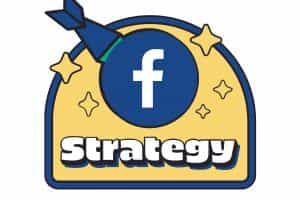
With this information, you can refine your strategy by adjusting the timing of broadcasts, improving the standard of video content and audio, or testing new templates.
For example, you notice that previous broadcasts have been more successful when streamed during weekdays between 9 a.m. and 3 p.m., but engagement drops off significantly on weekends. In that case, it might be beneficial to focus on weekday streaming for maximum reach and impact.
You could also try experimenting with different types of content based on insights from past streams to see if there are any trends in terms of topics or formats that generate more viewership or engagement.
Using insights wisely when planning Facebook broadcasts, you can refine your approach to offer audiences high-quality live videos at their preferred viewing times while elevating brand awareness and building trust among followers.
Common Mistakes To Avoid Time to Go Live
It’s important to avoid overlooking time zone differences, ignoring audience insights, inconsistent scheduling, and failing to promote your broadcasts effectively. Read on to find out how to refine your Facebook strategy and ensure the best timing for maximum engagement!

Overlooking Time Zone Differences
One common mistake many make when going live on Facebook is overlooking time differences. Your spectators may be located in different parts of the world, meaning their optimal viewing times will vary.
For instance, if you are based in Los Angeles and go live at 3 p.m., it may be midnight for some of your international viewers. This could result in lower engagement and missed opportunities to connect with a global spectators.
To avoid these step, consider your audience’s demographic locations and include an optimal time for each region when promoting your telecast. In addition, use Facebook analytics to track where most of your followers are located and adjust accordingly.
By taking these steps, you can ensure that you connect with all of your viewers regardless of their location and maximize engagement levels during every stream.
Ignoring Audience Insights
Ignoring your audience’s insights can lead to poor engagement and reach when going live on Facebook. Here are some mistakes to avoid:
- Review past engagement patterns to determine your audience’s best days and times.
- You are not analyzing your followers’ demographics and timing to schedule broadcasts at optimal times.
- Ignoring feedback from your spectators about what topics they want to see more of in your Facebook streams.
- You must interact with viewers during broadcasts, leading to a lack of engagement and boring content.
- We are not using tools on Facebook, such as video retention and chat history, to gain insights into viewing habits.
Utilizing these audience insights allows you to tailor your Facebook strategy accordingly and increase real time viewer engagement.
Inconsistent Scheduling
Inconsistent scheduling can be a significant problem regarding Facebook broadcasting. Suppose you’re unpredictable and infrequent with your streaming.
In that case, it makes it harder for your followers to tune in and interact with you. This can lead to a drop-off in engagement and ultimately cost you views, shares, and potential business opportunities.
To avoid this pitfall, create a reliable schedule that works for you and your spectators. Consistency is key – pick specific days of the week or hours of day that works best for your brand or niche.
Once you’ve established a routine, stick with it as much as possible. Your viewers will appreciate knowing when they can expect new content from you, which builds trust and loyalty over time.
Failing To Promote Your Broadcasts Effectively
When it comes to going live on Facebook, promotion is critical. Here are some common mistakes to avoid when promoting your broadcasts:
- Not providing enough notice: Giving your followers ample time to prepare for your live telecast is essential. Post about it on your Facebook page, share the event with your friends, and send out reminders leading up to the date and time.
- Relying solely on organic reach: Although Facebook can increase reach, don’t exclusively rely on it. Boost posts, run targeted ads, and utilize other social platforms to promote your telecast.
- Lack of customization: Make sure to customize the title and description of each video to portray what the stream will be about accurately. This will help attract viewers who are interested in that particular topic.
- Neglecting post-telecast promotion: Promoting your live video continues after the telecast ends. Share highlights or snippets of the video on the Facebook page and social platforms like Twitter and LinkedIn or embed them in blog posts, email newsletters, or podcasts and ask for feedback from viewers.
- Underestimating the power of influencer marketing: Collaborating with influencers or industry experts can significantly increase your live stream’s visibility and bring a new audience in.
By avoiding these common promotion mistakes, you can effectively promote your broadcasts and gain more views on Facebook.
Frequently Asked Questions
How do I increase my views on Facebook Live?
To boost your Facebook Live video views:
- Plan a strategic posting schedule on multiple social media channels.
- Target peak times when your ideal audience is active, and avoid off-peak hours.
- Share your streaming video in relevant Facebook groups and pages, ensuring your privacy settings allow maximum visibility.
- Utilize the insights tab to identify peak traffic times for individual videos.
- Remember to cross-promote on other popular social media platforms.
Engaging the right crowd can turn you from a business owner with random views into a live-streaming success!
How long should a Facebook live video stream be?
A Facebook Live video ideal length depends on your content and audience. Generally, a video post should be at least 10 minutes to maximize news feed visibility. Avoid the worst time for your Facebook pages; pick a random time that works best for your viewers. Keep it engaging, and always remember: a captivating Live stream is worth a thousand clicks!
How much does Facebook Live pay for views?
Facebook Live doesn’t directly pay for views. However, the more views you receive, your potential earnings from ad revenue and viewer donations increase. The estimated earning range is between $2 to $5 per CPM (Cost per 1000 impressions).
How do I attract viewers to my livestream?
Promote your live stream across all platforms, schedule it in advance, and make sure your content is engaging and interactive. Collaboration with other creators or influencers can also help attract more viewers.
What not to do when live streaming?
Avoid poor planning, limited promotion, and infrequent live videos. Ensure your content is well-researched and consistent with your live streams to maintain viewer engagement.
What hour is Facebook most active?
Peak times on Facebook vary, but generally, the best times to post are between 7 am-9 am, 1 pm-3 pm, and 7 pm-9 pm. These are the times when most users are active on the platform.
How long does the average person stay on Facebook?
The typical user spends around 19.7 hours monthly on Facebook’s Android app. This is an average across all worldwide users and may vary depending on the user’s demographics and usage habits.
Why can’t I go live with 500 followers?
Facebook requires you to have at least 1,000 followers to go live and receive gifts. If you have fewer followers or are under the age of majority, you may not have access to the Live feature.
Conclusion – The Importance Of Timing In Facebook Live Broadcasting
In the world of Facebook marketers, timing is everything. Knowing when to go live can mean distinguishing between a successful telecast and one that falls flat. By considering your spectator’s demographics, industry relevance, and previous engagement patterns, you can find the optimal time to connect with your followers in real-time.
Remember to appreciate the power of building trust and authenticity through interactive and engaging broadcasts. Use insights from analytics to refine your strategy and avoid common mistakes like ignoring audience insights or inconsistent scheduling.
The key takeaway? Regarding Facebook Live broadcasting, the importance of timing cannot be overstated – so make sure you’re going live at the right time for maximum impact!

